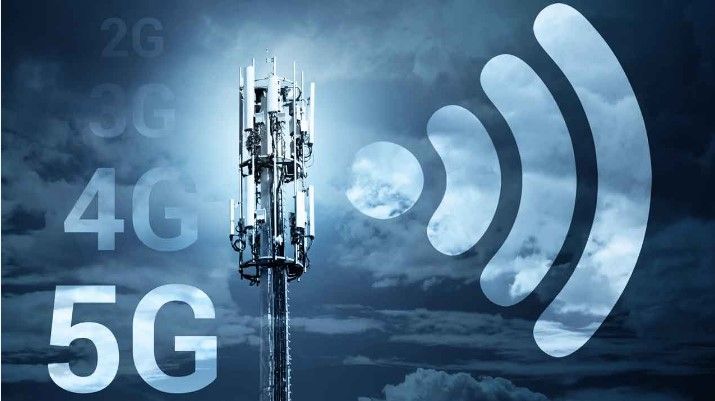
Unlock the Potential of 5G Home Internet: Is It Right for You?
Are you frustrated with your current internet connection? Given that internet service providers are notoriously low in customer satisfaction rankings in the US, you’re likely not alone. Traditionally, home internet has been dominated by cable connections with limited options. However, the advent of cutting-edge, low-latency 5G technology is set to change the status quo.
5G home internet offers a promising alternative to conventional broadband services. Mobile carriers are now promoting 5G internet packages as they seek to offset the costs associated with the deployment of these advanced networks. This development could introduce genuine competition in the broadband market. If you’re curious about 5G home internet, how it stacks up against traditional broadband, and whether it fits your needs, we’ve got the insights you need.
What is 5G?
5G stands for the fifth generation of global wireless standards. Over the past few years, mobile carriers have been deploying this new generation of cellular networks. Unlike its predecessor, 4G, 5G utilizes previously unused high-spectrum radio frequencies. To understand more, you might check out a detailed guide on 5G. In essence, 5G delivers faster speeds, reduced latency, and supports more simultaneous device connections.
Understanding 5G Home Internet
5G home internet is designed as a robust alternative to traditional broadband. Instead of relying on a physical cable, this service connects you to the internet using the 5G cellular network through a stationary receiver placed inside or outside your home. Similar to mobile phones, this service uses a SIM card and requires a service agreement. A modem and router are still necessary to convert the signal into Wi-Fi to distribute throughout your premises.
Comparing 4G and 5G Home Internet
While some providers still offer 4G LTE home internet, a mix of 4G and 5G solutions is becoming more common. Both technologies require a receiver, but 5G delivers notably faster speeds and reduced latency. Theoretical speeds for 5G can exceed 10 Gbps with latency as low as 1 millisecond, although typical real-world speeds are around 1 Gbps—sufficient for 5G to rival traditional broadband. In contrast, 4G LTE usually tops out at 100 Mbps and often performs slower in practical applications.
Is 5G Home Internet Superior to Broadband?
It depends. For homes wired with fiber optic cables, traditional broadband can offer exceptionally fast speeds. However, if your connection is through older copper cables, your speed might be constrained. Additionally, the proximity to local data exchanges and overall internet traffic in your area can affect performance. In remote areas with limited 5G coverage, traditional broadband might still be your best option. However, if you’re in a region with robust 5G coverage and existing internet services are lacking, switching to 5G home internet could be advantageous.

Advantages of 5G Home Internet
The primary benefits of opting for 5G home internet include:
- Ease of Installation: Without the need for physical cabling, setting up 5G home internet is generally straightforward and can often be done without professional assistance.
- Speed: With strong local 5G coverage, expect significantly faster service than what old copper cables can provide.
- Cost-Effectiveness: 5G home internet might be more affordable than traditional wired internet. Many carriers offer discounts when you bundle 5G home internet with other mobile services.
Potential Drawbacks
However, there are considerations to keep in mind:
- Coverage Limitations: Effective 5G home internet service is predominantly available in urban areas. If your area lacks sufficient 5G coverage, this option might not be feasible.
- Hardware Requirements: Optimal service requires a clear line of sight to a 5G cell site, which might necessitate installing an external antenna.
- Network Congestion: As more users join 5G networks, you might experience reduced speeds or occasional disruptions.
Who Provides 5G Home Internet?
Several carriers offer 5G home internet, often alongside 4G LTE services. The best deals are usually available from your existing mobile provider. Here’s a list to get you started:
- In the US: AT&T Internet Air, Starry Home Internet, T-Mobile 5G Home Internet, US Cellular Home Internet, Verizon 5G Home Internet.
- In the UK: EE, National Broadband, Three, Vodafone.
Cost of 5G Home Internet
The price of 5G home internet is comparable to that of wired services and can sometimes be cheaper. Plans can start as low as $15 per month and generally range from $30 to $80 monthly, depending on the desired speed and service level. Many providers also offer attractive incentives, such as unlimited data, no fixed contracts, and waived equipment fees.
Before you commit, make sure to understand all terms and conditions fully. With its potential for higher speeds and simpler installation, 5G home internet is worth considering as a serious contender to traditional broadband, especially if you are in an area with adequate coverage.
Conclusion
As we continue to embrace the technological advancements of the 21st century, 5G home internet emerges as a compelling alternative to traditional broadband. Offering benefits like easier installation, faster speeds, and potential cost savings, it represents a significant shift in how we connect to the internet. While it may not yet be the perfect solution for everyone—particularly those in rural areas or places with limited 5G coverage—its advantages make it a worthy consideration for many households. As coverage expands and technology improves, 5G home internet is poised to become a key player in reshaping our digital landscape. Before making the switch, evaluate your local 5G coverage and consider how the benefits align with your internet needs. With the right conditions, 5G home internet could not only meet but exceed your expectations, providing a reliable and efficient connection that enhances your online experiences.








By Andrej Kovacevic
Updated on 14th July 2024